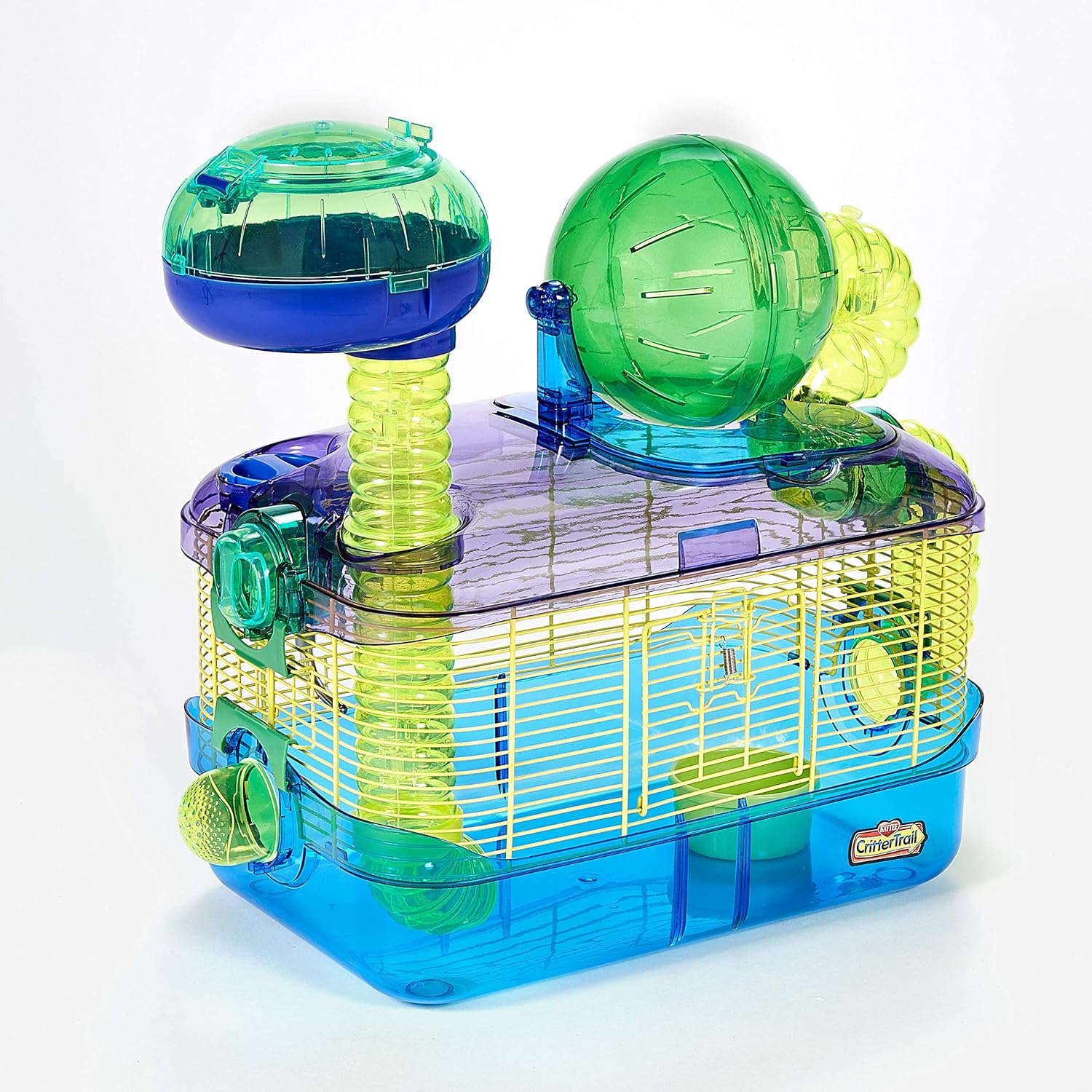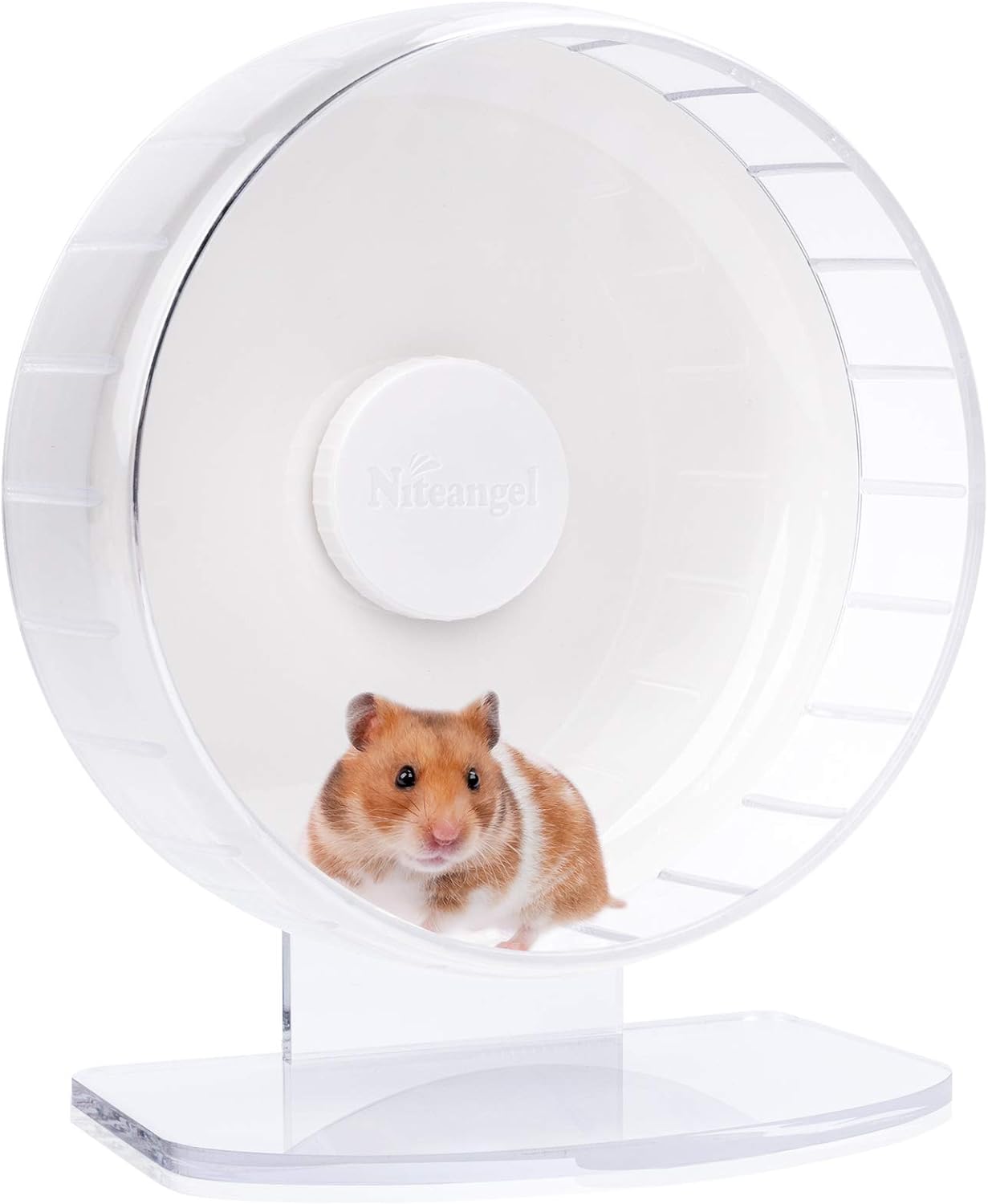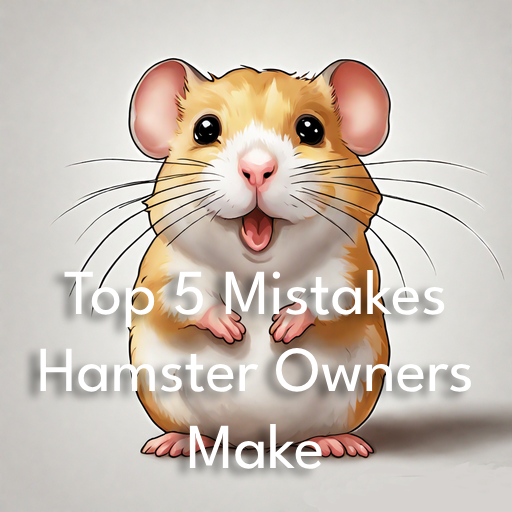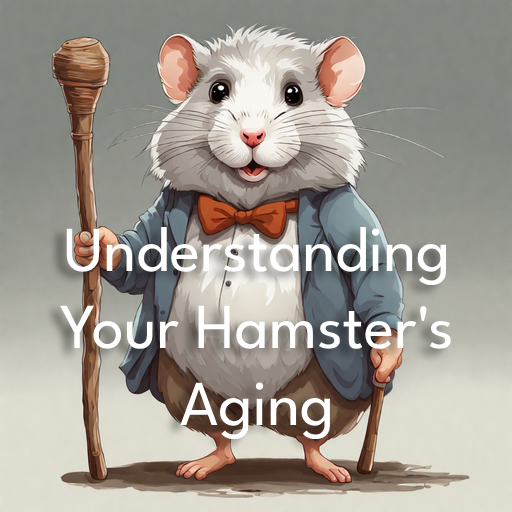Hamsters are charming little pets known for their playful antics, but decoding their behavior can sometimes be a head-scratcher for owners. Understanding your hamster’s actions and reactions is key to providing them with the best possible care. In this comprehensive Hamster Behavior Guide, we’ll unravel the mysteries of your furry friend’s conduct, providing insights into their world. Whether you’re a seasoned hamster owner or a newbie, you’ll discover essential knowledge to foster a stronger bond with your pet. Let’s delve into the intriguing realm of hamster behavior!
A Closer Look at Hamster Behaviors
Hamsters have a rich tapestry of behaviors, each revealing something about their mood, health, and needs. In this chapter, we’ll dissect the elements that constitute hamster behavior, shedding light on their unique characteristics:
1. Nocturnal Nature: Hamsters are naturally nocturnal creatures, which means they are most active during the night. Understanding this behavior can help you adapt your interaction with them and maintain a peaceful environment in your home.
2. Territorial Instincts: Hamsters are territorial animals who can be quite possessive about their space. Knowing to respect their territorial boundaries will ensure a happy cohabitation.
3. Common Hamster Behaviors: Hamsters exhibit various behaviors that offer insights into their well-being. This section will explore some of these behaviors, such as grooming, chewing, and scent-marking, to help you decipher what your hamster might be trying to communicate.
Grooming: Grooming is an essential part of a hamster’s daily routine. They meticulously clean themselves, similar to cats. Observing your hamster’s grooming habits is a good indicator of their overall well-being. Excessive grooming, however, can be a sign of stress, allergies, or skin issues, so it’s crucial to monitor their grooming patterns.
Chewing: Hamsters have ever-growing teeth, and they need to chew to keep them at a healthy length. Providing suitable chew toys, wooden blocks, or hard treats can satisfy their chewing instincts and promote dental health. Understanding their chewing behaviors can prevent overgrown teeth, which can lead to various health problems.
Scent-marking: Hamsters have scent glands located on their hips, which they use to mark their territory. They rub these scent glands on objects in their cages, leaving their scent behind. This behavior is entirely normal and helps them feel secure in their environment. Understanding scent-marking can provide insights into your hamster’s sense of home and comfort.
Common Hamster Behavior Issues
Even the most adorable hamsters can sometimes exhibit problematic behavior. This chapter will help you identify, address, and overcome these issues:
1. Biting and Aggression: While hamsters are generally gentle, they can sometimes bite or display aggressive behaviors. Understanding why this happens and how to manage these tendencies will help you create a safer and more harmonious environment for your pet. We wrote on reasons for hamster’s biting in this article.
2. Stress and Anxiety: Like any pet, hamsters can experience stress and anxiety. Identifying signs of stress in your hamster is crucial to maintaining their well-being. Some common indicators of stress in hamsters include:
- Excessive Grooming: If your hamster suddenly increases their grooming to the point of fur loss, it could be a sign of stress.
- Aggression: Unusual aggression or biting can indicate stress or discomfort.
- Decreased Activity: A hamster that becomes less active and hides more than usual may be experiencing stress.
- Loss of Appetite: If your hamster suddenly loses interest in food, it’s a red flag.
- Excessive Chewing or Digging: Overly aggressive chewing or digging may also signal stress.
Reducing Stressors:
- Proper Cage Setup: Ensure their cage is appropriately sized and equipped with hideaways, tunnels, and toys to reduce stress.
- Minimal Handling: Avoid excessive handling, especially during the daytime when they are naturally more inactive.
- Quiet Environment: Maintain a peaceful and quiet environment to avoid startling your hamster.
- Proper Diet: Ensure your hamster has a balanced and appropriate diet to promote their overall health.
3. Overactivity: Sometimes, hamsters may become overly active, which could signify discomfort or other issues.
Overactivity in hamsters can be due to various reasons, including:
- Improper Cage Size: A cage that’s too small can make a hamster feel restless. Make sure the enclosure is big enough. We advise on the cage from this series, as it has so many things included with the tubes that allow you to connect to another cage, so your hamster can roam and explore all night long.

- Lack of Exercise: Hamsters need time outside their cages for exercise and exploration. Consider a safe playpen for this purpose. More about this cool thing for hamsters we’ve already covered in the playpen article.
- Health Issues: Overactivity can sometimes be linked to health concerns. Consult a veterinarian if you suspect this.
Management Strategies:
- Enrichment: Offer stimulating toys and activities inside the cage to keep them engaged and mentally stimulated.
- Regular Playtime: Provide a safe space outside the cage for supervised playtime to burn off excess energy. If you are afraid you will lose your hamster under the objects in your room, consider a playpen as then you won’t need to supervise your pet each second.

- Consult a Veterinarian: If overactivity is excessive or accompanied by other unusual behaviors, consult a veterinarian to rule out any underlying health issues.
Creating an Enriching Environment
1. Cage Setup:
Cage options: When setting up a hamster’s home, you have two primary choices: wire cages and aquariums. Wire cages offer better ventilation, while aquariums provide safety and containment. Choose the one that suits your hamster’s needs, keeping in mind their size and the need for proper ventilation.
Proper Bedding and Nesting Materials: Comfortable bedding is essential for your hamster’s well-being. Opt for soft, dust-free bedding materials like aspen shavings, paper bedding, or coconut coir. Your hamster will also need nesting materials, such as plain tissue paper or hay, to create a cozy nest.
For more bedding options feel free to check our article 😊
Cage Arrangement: Properly arranging items in the cage is essential for your hamster’s comfort. Place the hamster wheel in a way that doesn’t obstruct movement, offer hiding spots like tunnels and hideaways, and ensure that food and water sources are easily accessible.
2. Toys and Accessories:
Toy Variety: Hamsters are naturally active and curious creatures. Provide them with a variety of toys and accessories to stimulate their minds and bodies. Toys may include exercise wheels, tunnels, chew toys, puzzle feeders, and hideaways.
Selecting the Right Toys: Not all hamsters have the same toy preferences. Observe your pet to see what they enjoy most. Offer age-appropriate options, and switch toys regularly to keep things interesting.
Rotating Toys: Regularly changing and rotating the toys in your hamster’s cage can prevent boredom. You can have a selection of toys and introduce a few at a time, then switch them out to maintain your pet’s interest.
3. Exercise Opportunities:
Creating Play Areas: Designing dedicated play areas outside of the cage provides your hamster with additional exercise opportunities. Secure these areas to prevent escapes and hazards while offering stimulating activities like tunnels and mazes.
Safe Hamster Wheels: The right hamster wheel is crucial for your pet’s physical activity. Choose a wheel that is the appropriate size and design to prevent injuries or back problems. Ensure that the wheel is safe and easy to access in your hamster’s cage. If you need a wheel for your hamster that is big enough and quiet then we recommend this one
Behavioral Changes and Health
1. Signs of Illness: Hamsters may exhibit changes in behavior when they are unwell. Look for signs such as reduced activity, weight loss, changes in posture, and unusual behaviors. When you observe these signs, it’s essential to seek prompt veterinary care.
2. Common Ailments – Addressing Respiratory and Dental Problems:
Respiratory Problems: Respiratory issues can arise in hamsters. Symptoms may include sneezing, wheezing, or labored breathing. It’s crucial to identify these symptoms and consult a veterinarian for treatment and prevention.
Dental Issues: Hamsters are prone to dental problems. Look for signs such as overgrown teeth or difficulty eating. Regularly providing chew toys can help maintain dental health. If you observe dental issues, consult a vet for care.
3. Veterinary Care: Regular veterinary check-ups are vital to monitor your hamster’s health. In cases of illness or injury, immediate veterinary care is necessary. Ensure your hamster has regular check-ups to maintain their overall health.
Bonding and Building Trust
1. Handling Tips: When interacting with your hamster, follow proper handling techniques. Approach your pet calmly and avoid sudden movements. Support them with both hands when picking them up, ensuring their comfort and safety during interaction.
2. Taming Process: The taming process is crucial for building trust and social interaction. Start by sitting near the cage and speaking softly to your hamster. Gradually introduce your hand, offering treats to create a positive association. As your hamster becomes more comfortable, you can begin handling them.
3. Play and Interaction: To strengthen the bond between you and your hamster, engage in bonding activities like hand-feeding and gentle petting. Spend time together in a quiet, calm environment to foster trust and positive interaction.
Conclusion on Hamster Behavior
Understanding your tiny hamster companion’s behavior is crucial for providing them with the best care and ensuring their well-being. By recognizing and responding to your hamster’s cues, you can create a harmonious living environment, enrich their lives with engaging toys and accessories, and even establish a strong bond through taming and interactive play.









